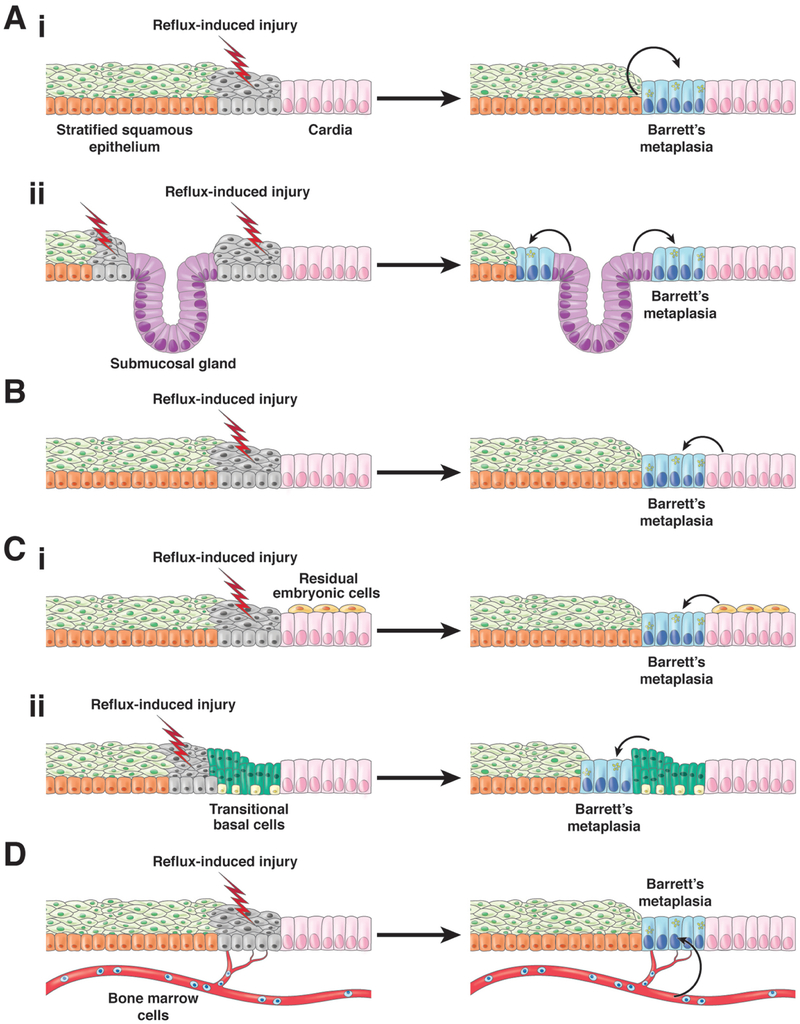Figure 2.
Proposed cells of origin for BE. 1) Cells native to the esophagus including (1a) squamous epithelial cells that undergo reflux-induced transdifferentiation or transcommitment to produce the columnar cells of Barrett’s metaplasia and (1b) Progenitor cells in esophageal submucosal glands and/or their ducts. 2) Progenitor cells in the gastric cardia. 3) Specialized populations of cells at the esophago-gastric junction migrate into the reflux-damaged esophagus including (3a) residual embryonic cells (RECs) or (3b) transitional basal cells (TBCs). 4) Circulating bone marrow cells. For all of these proposed progenitor cells, reflux-induced injury to the esophageal squamous mucosa is assumed to initiate the metaplastic process, perhaps by stimulating progenitor cell migration into the damaged esophagus via a wound-healing process. In addition, reflux is assumed to induce the transcommitment of the progenitor cells to produce the multiple columnar cell types of Barrett’s metaplasia. (Figure modified from Jiang et al.17)

